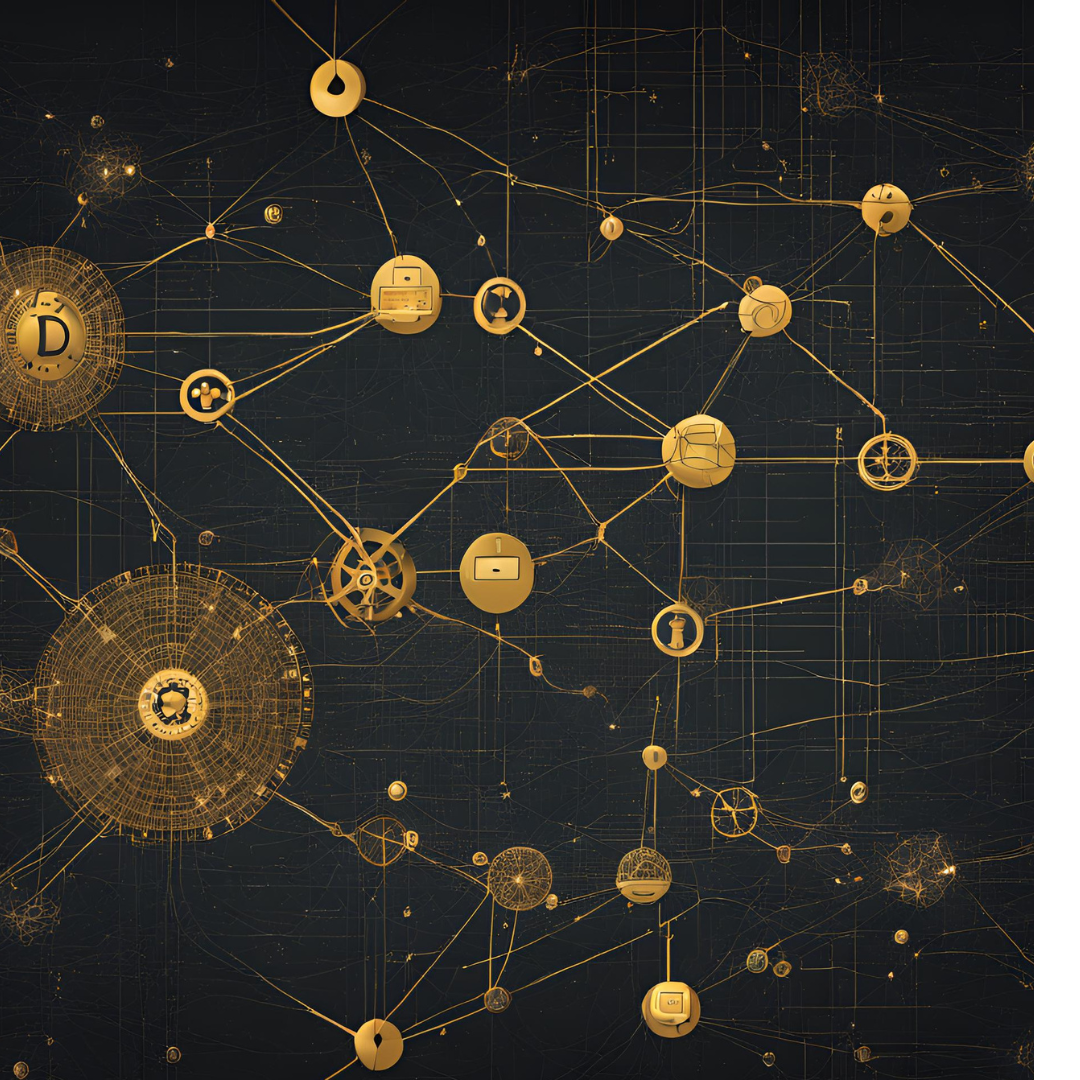From Consumption to Creation: Understanding How Software and IT Ecosystem Components Are Built from Scratch
In India and across the globe, millions of individuals and businesses consume a wide variety of software and IT tools—programming languages, databases, frameworks, platforms, operating systems, cloud infrastructure, smartphones, laptops, and more. However, many people simply learn to use these technologies rather than delve into the underlying principles or think about how they are built from scratch. The multibillion-dollar education industry often focuses on teaching students to passively absorb and use these technologies without fostering a deeper understanding of how they were created or why they even exist in the first place.
But for those who want to step into the realm of creation, it is crucial to understand the history, mindset, and thought process behind the development of these technologies. This requires thinking from first principles and breaking down complex ideas into their most basic components, so you can build something truly innovative.
In this blog post, we will explore the mindset and approach behind creating the key components of the software and IT ecosystem. We will look at how innovators approached problems, whether they started with an idea or a problem statement, and how science and research played a role in their creations.
The Birth of Programming Languages
Programming languages are the bedrock of all software systems. They enable humans to communicate with machines and write instructions that computers can execute. But programming languages weren’t just created out of thin air—they were born out of a need to simplify how we instruct machines.
The Need: Simplifying Machine Interaction
In the early days of computing, programming was done using machine code or assembly language. These languages were highly specific to the hardware and required a deep understanding of how the machine worked. This made programming both tedious and error-prone.
Visionaries like John Backus, the creator of Fortran (1957), saw the need for a higher-level language that abstracted away the complexity of machine-specific code. Fortran, and later languages like C, Python, and Java, made it easier to write code that could be reused across different machines and applications.
The Mindset: Abstraction and Efficiency
The key mindset in creating programming languages was abstraction. Innovators sought to create tools that simplified programming, making it more accessible to a wider range of people. The idea was to abstract the complexity while ensuring efficiency and performance. They also recognized the need to constantly evolve these languages as computing power and user requirements grew.
Science and Research Involvement
Programming language development was often driven by scientific needs. For example, Fortran was developed to solve complex mathematical problems in scientific computing. Theoretical research in computer science also played a significant role, particularly in areas like compiler design, type theory, and formal language theory.
The Evolution of Databases
Databases form the backbone of almost all modern applications, from social media platforms to enterprise software. But how did this vital component of the IT ecosystem come to be?
The Need: Organized Data Storage and Retrieval
Before databases, data was often stored in flat files with limited flexibility in how it could be accessed and organized. In the 1960s, IBM developed the first database management systems (DBMS) to solve the problem of organizing and retrieving large amounts of data efficiently. Edgar F. Codd, an IBM researcher, introduced the concept of relational databases in 1970, revolutionizing how data was structured, stored, and accessed.
The Mindset: Structuring Information for Efficiency
Codd’s mindset was based on structuring data using mathematical principles, particularly set theory and relational algebra. He saw the need for a model that could flexibly represent relationships between different pieces of data. This was a first-principles approach, breaking down the problem of data management into its most fundamental elements—how information is structured and related.
The Role of Research
Codd’s work was highly theoretical, deeply rooted in mathematics and logic. This underscores the importance of formal research in developing core technologies like databases. Today, modern NoSQL databases, like MongoDB, have emerged from the need to handle unstructured data in real-time web applications. The mindset driving these innovations was to solve real-world scaling problems in web technologies, showing how research and industry needs converge to create new paradigms.
Operating Systems: The Core of Computing
Operating systems (OS) are another fundamental component of the software ecosystem. Without them, hardware would be useless, and users wouldn’t be able to interact with their devices.
The Need: Managing Hardware Resources
Early computers had no operating systems, meaning users had to write software that directly controlled the hardware. This was inefficient and often led to compatibility issues. The need for a generalized layer that could manage hardware resources and allow different applications to run simultaneously led to the development of the first operating systems, such as UNIX (developed by Ken Thompson and Dennis Ritchie in the 1960s).
The Mindset: Multipurpose and Interoperability
The creators of UNIX had a vision of creating an operating system that could be used on a wide variety of hardware platforms. Their mindset was focused on portability, modularity, and simplicity. They followed the “small is beautiful” philosophy, designing the system to be composed of small, modular programs that could be combined in powerful ways. This mindset of minimalism and modularity became foundational in software design.
The Role of Research and Innovation
UNIX was developed in Bell Labs, a research facility. It was deeply influenced by academic research in areas like operating systems theory, memory management, and user interface design. Its impact is still felt today, with many modern operating systems (like Linux and macOS) drawing heavily from UNIX principles.
Cloud Infrastructure: The Foundation of Modern Web Applications
Cloud computing has transformed the way we build and deploy software. Instead of running applications on local machines, cloud infrastructure allows us to host applications on remote servers and scale them globally.
The Need: Scalability and Flexibility
Companies like Amazon, Google, and Microsoft recognized a critical problem: as web applications became more popular, businesses needed a way to scale their infrastructure without having to invest in expensive hardware. The solution was cloud computing, which provided scalable, flexible, and cost-effective infrastructure that could be shared across multiple users.
The Mindset: Efficiency and Automation
The pioneers of cloud computing were driven by a mindset of efficiency. They wanted to create an infrastructure that could scale dynamically based on demand. Automation played a huge role here—the idea was to automate resource allocation, management, and scaling, so developers could focus on building applications instead of managing servers.
Science, Research, and the Evolution of Cloud
Cloud infrastructure is deeply rooted in research, particularly in areas like distributed systems, network theory, and virtualization. The science behind cloud computing is what allows us to scale applications globally and provide services that are highly available and fault-tolerant.
Building the Mindset: Thinking from First Principles
If there is one key takeaway from the history of how software and IT components were built, it is the importance of thinking from first principles. The innovators who created programming languages, databases, operating systems, and cloud infrastructures didn’t just build on existing ideas—they broke problems down into their most basic elements and rebuilt from the ground up.
Start with a Need or Problem Statement
Many of these innovations were born out of necessity. Programming languages emerged to simplify machine communication. Databases were created to efficiently store and retrieve data. Operating systems were developed to manage hardware resources. Cloud infrastructure was designed to solve scalability issues. Always start by identifying a real problem that needs solving.
Understand the Fundamentals
To build something truly innovative, you need to understand the science and research behind it. Learn the mathematical and logical principles that underpin programming languages. Understand the theories of data management that power databases. Explore the principles of operating systems and distributed systems. The more you understand the fundamentals, the more creative you can be in solving problems.
Adopt a First-Principles Mindset
The most innovative minds don’t accept things at face value. Instead of thinking incrementally, they think from first principles. This means breaking down complex systems into their most basic components and asking, “Why does this work this way?” and “Can I improve this?”
Origins and Evolution of the Ecosystem: A Holistic Understanding
Before diving into specific components, it is crucial to recognize that the software and IT ecosystem didn’t emerge fully formed; it evolved over decades. Each component—programming languages, operating systems, databases, and cloud infrastructure—emerged in response to the problems and challenges of a particular era. To truly understand the ecosystem, you must first grasp the historical context in which these tools were created.
- The Early Days of Computing: In the 1940s and 1950s, computers were massive machines used only for specialized tasks like calculations in physics and engineering. Innovations were driven by military, academic, and industrial needs. Early pioneers like Alan Turing, John von Neumann, and Grace Hopper laid the foundation for concepts that would later lead to modern computing.
- Cold War Influence: The Cold War-era arms race fueled a huge demand for advancements in technology, specifically in computation. Much of what became mainstream in computing had its roots in research that aimed to solve problems related to cryptography, communication, and simulation.
Understanding this broader context allows creators to identify the historical drivers behind technological innovation and helps to generate new ideas by recognizing patterns in how challenges have driven development.
2. Fundamentals of Hardware-Software Interaction: From Binary to Abstraction
At the most basic level, all software interacts with hardware through binary instructions—1s and 0s. However, understanding how abstraction evolved is key to understanding how modern software systems function.
- Binary and Machine Code: Every instruction a CPU executes is in the form of binary (0s and 1s). Early programmers had to manually write machine code to perform tasks, which was complex and required deep knowledge of the specific hardware architecture.
- Assembly Language: This was the first abstraction over machine code, allowing programmers to use mnemonic codes (like MOV, ADD, SUB) instead of binary. While still low-level, it was easier to use and understand than machine code. For many, this was their first taste of abstraction.
- Higher-Level Languages: The rise of languages like COBOL, Fortran, and C introduced even higher levels of abstraction. They abstracted hardware interactions, allowing developers to write instructions in a more human-readable form, freeing them from dealing directly with hardware.
Understanding how these layers of abstraction evolved is fundamental to grasping the purpose behind programming languages and frameworks. To innovate in software development, you must know not just how to use these abstractions, but why they exist.
3. Ecosystem Components Are Systems of Systems: Interconnectedness
The IT ecosystem isn’t composed of isolated components. Rather, it is a highly interconnected network of systems.
- Hardware and Firmware: Firmware exists as a bridge between hardware and software. Every hardware device—from a smartphone to a server—requires firmware to function, and understanding how software interacts with hardware through firmware is key to building optimized and efficient systems.
- Operating Systems: Operating systems like Linux, Windows, and macOS manage these interactions. They allocate memory, manage processes, and provide user interfaces. An advanced developer or creator must grasp how an operating system schedules tasks, manages I/O devices, and handles system resources like memory and CPUs.
- Networks and Protocols: The Internet is built on a foundation of protocols like TCP/IP, HTTP, and DNS, which manage communication between machines. Understanding how information is passed between devices, how data is routed, and how networking protocols ensure reliability and security is essential for building scalable, distributed systems.
To build or innovate within this ecosystem, it is important to understand how these systems work together. An operating system doesn’t function in isolation, nor does a database or a web server; they are all part of a larger machine—a system of systems.
4. Advanced Understanding of Compilers and Interpreters: Bridging Code and Execution
One of the most underappreciated areas in software creation is understanding how code written in a high-level language is transformed into machine instructions.
- Compilers: A compiler is a program that translates high-level code (like C, C++, or Java) into machine code. Early computer scientists like Grace Hopper (who developed the first compiler) recognized that such a tool could simplify programming significantly by allowing humans to express instructions in more intuitive ways.
- Interpreters: Instead of translating all code upfront, interpreters (like those used for Python or JavaScript) execute code line by line. This makes them slower than compiled languages but more flexible, allowing for dynamic execution.
- JIT (Just-In-Time) Compilation: Languages like Java and JavaScript have evolved hybrid approaches. For instance, Java’s JVM (Java Virtual Machine) compiles code into an intermediate form (bytecode), which is then interpreted or compiled into machine code just before execution.
Understanding the intricacies of how code is compiled and executed provides insight into the trade-offs between performance, portability, and development speed—knowledge essential for building efficient, scalable applications.
5. Operating Systems: From Basic Task Management to Advanced Scheduling
An operating system is much more than just a user interface. At its core, it is responsible for managing all resources of a computer, including CPU, memory, storage, and peripheral devices.
- Process Scheduling: Modern operating systems use complex scheduling algorithms to allocate CPU time to different processes. Understanding how these algorithms work, such as round-robin or priority-based scheduling, is critical for optimizing applications, especially in real-time systems where timely execution is paramount.
- Concurrency and Multithreading: In today’s multi-core world, most applications run several processes or threads simultaneously. Multithreading enables applications to perform multiple tasks at once, improving efficiency. Developers and creators must understand thread management, synchronization, and the challenges of concurrency (e.g., race conditions, deadlocks) to build robust and scalable systems.
- Memory Management: Operating systems use techniques like paging, segmentation, and virtual memory to ensure efficient use of a system’s physical memory. Understanding these principles allows developers to write more memory-efficient programs, especially in environments with constrained resources.
6. Data Storage and Retrieval: From File Systems to Distributed Databases
At a basic level, computers store data in files on a disk. However, as data scales, more advanced data management techniques become necessary.
- File Systems: File systems manage how data is stored on disk. They ensure data is written efficiently and retrieved quickly. File systems like NTFS, ext4, and APFS each have different optimizations for performance and security.
- Relational Databases: The rise of databases like MySQL, PostgreSQL, and Oracle allowed for structured storage and retrieval of large datasets. SQL became the standard language for querying and manipulating data. However, relational databases face scalability issues, leading to the development of NoSQL databases.
- NoSQL and Distributed Databases: Systems like MongoDB, Cassandra, and DynamoDB were built to handle unstructured data and scale horizontally across distributed systems. Understanding the trade-offs between consistency, availability, and partition tolerance (as described by the CAP theorem) is crucial for architects designing modern web applications.
7. Networking at Scale: From Local Systems to Global Cloud Infrastructure
To build globally scalable systems, it’s necessary to understand the architecture of networks—from local systems to the cloud.
- TCP/IP and the Internet Protocol Stack: The foundation of modern networking is the protocol stack. TCP/IP ensures reliable data transfer across networks, while protocols like DNS translate human-readable domain names into machine-readable IP addresses. Understanding how data packets traverse networks and the challenges of latency, congestion, and packet loss is fundamental for building real-time applications like video conferencing or online gaming.
- Load Balancing and Distributed Systems: In modern cloud environments, no single server handles all requests. Instead, traffic is distributed across many machines using load balancers. Knowing how to design distributed systems to handle millions of requests per second is key to building scalable applications.
- Edge Computing and Serverless Architectures: As applications have become more distributed, innovations like edge computing (where data processing happens closer to the user) and serverless architectures (where backend services are dynamically managed by cloud providers) have gained prominence. Understanding how to leverage these technologies allows developers to build faster, more efficient systems with lower latency and higher scalability.
8. AI and Machine Learning: From Algorithms to Large-Scale Systems
Today, artificial intelligence (AI) and machine learning (ML) are revolutionizing industries, but they are built on top of decades of research and experimentation.
- Theoretical Foundations: Machine learning is rooted in statistics and probability theory. To fully grasp ML systems, it’s important to understand how algorithms like gradient descent, decision trees, and neural networks are grounded in mathematical optimization.
- Scalability in AI Systems: Training AI models on large datasets requires significant computational resources. Frameworks like TensorFlow and PyTorch allow for distributed training across multiple machines, using cloud-based GPU and TPU instances. This is a prime example of how software and hardware co-evolve to push the boundaries of innovation.
- Ethics and Responsible AI: With great power comes great responsibility. Developers working on AI systems must be aware of ethical issues, including data privacy, bias in training data, and the impact of AI-driven automation on society.
9. Building with a Problem-Solving Mindset: From Idea to Execution
At the heart of all innovation is problem-solving. Most of the components in the IT ecosystem didn’t emerge because someone simply had an idea—they emerged because someone found a problem and wanted to solve it.
- Problem Identification: Whether it was the inefficiency of manually writing machine code (leading to programming languages) or the need for scalable infrastructure (leading to cloud computing), the creation of every major software system began with a problem. Understanding how to identify real-world problems and devise technical solutions is the key to innovation.
- Design Thinking: One powerful methodology for problem-solving is design thinking, which emphasizes understanding users, challenging assumptions, and redefining problems to identify alternative strategies and solutions. A deep understanding of your users and their needs is essential to create products that truly solve problems.
By advancing through these foundational to advanced concepts, anyone working in the software development ecosystem—from developers to product designers to systems architects—can gain a comprehensive understanding of the intricacies and interconnectedness of this vast landscape.
Conclusion: A Call to Innovate
In India and many parts of the world, we have become excellent consumers of technology, but we must strive to be creators as well. By thinking from first principles, understanding the fundamentals, and addressing real-world needs, we can move from passive consumption to active innovation. We can contribute to building the future of technology, rather than just using the tools created by others. The mindset of building from scratch involves curiosity, scientific rigor, and a willingness to challenge the status quo. So, as you embark on your journey to create something new, remember to think deeply, understand the fundamentals, and always seek to solve meaningful problems.







